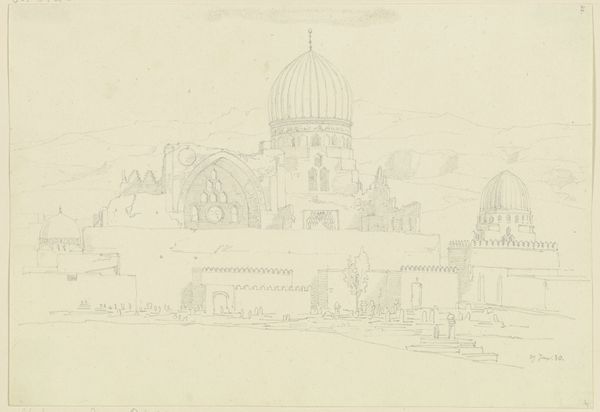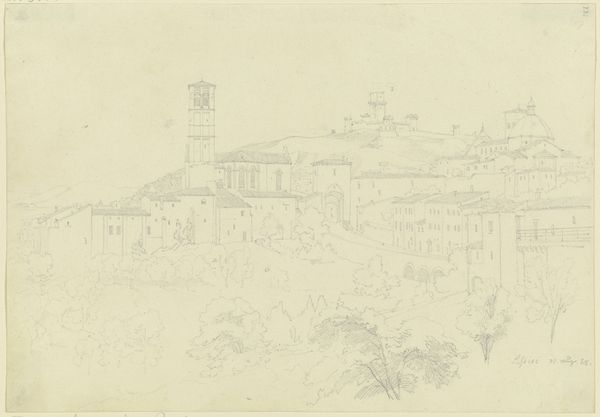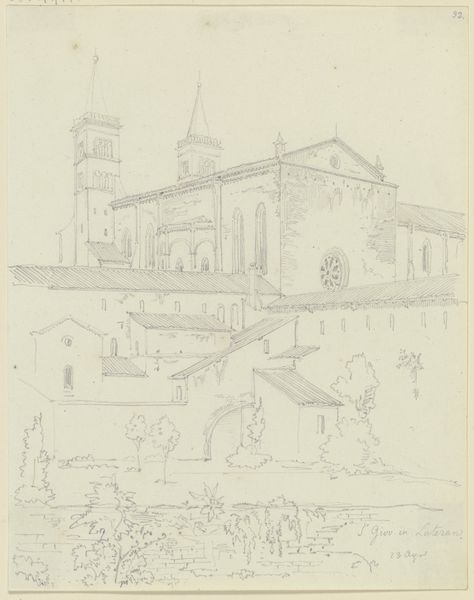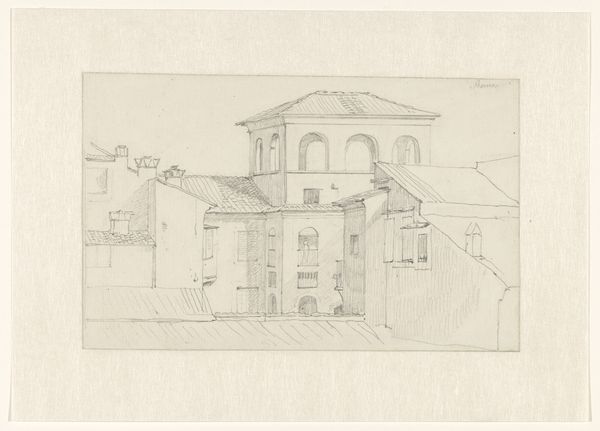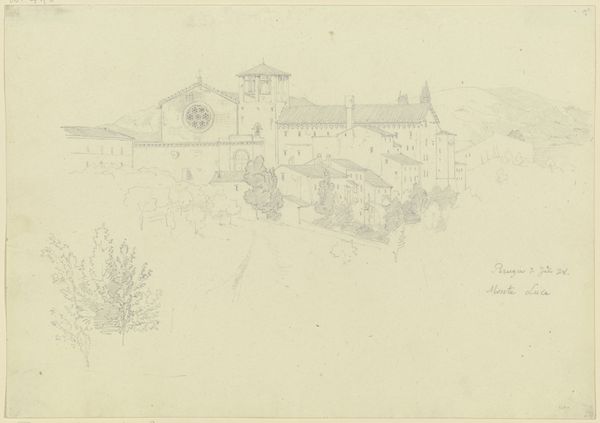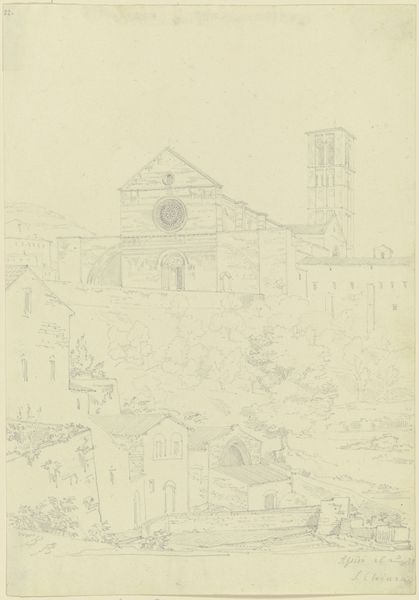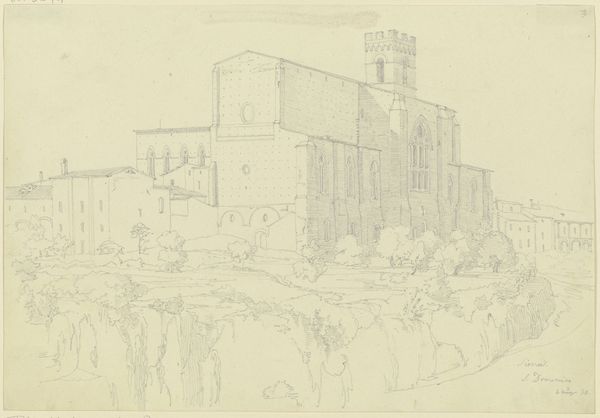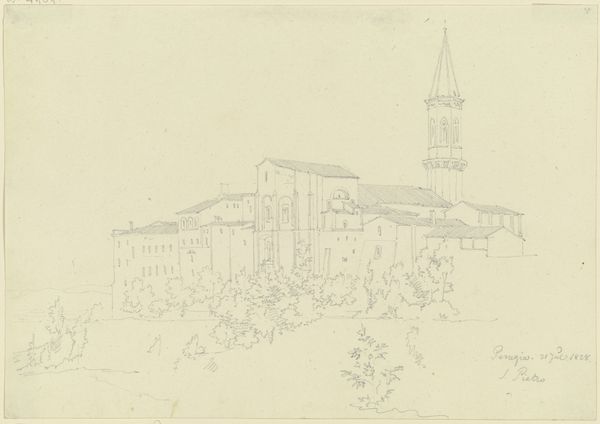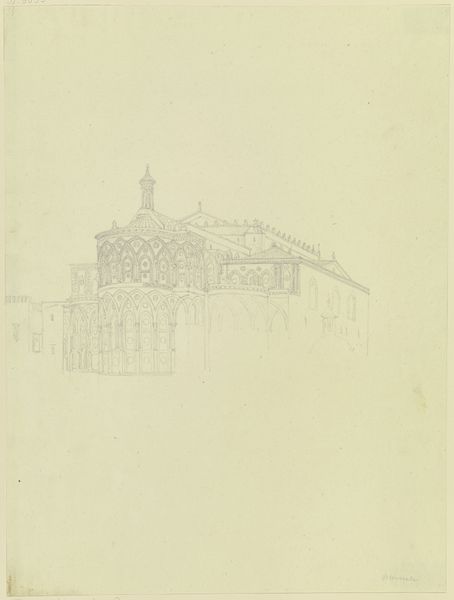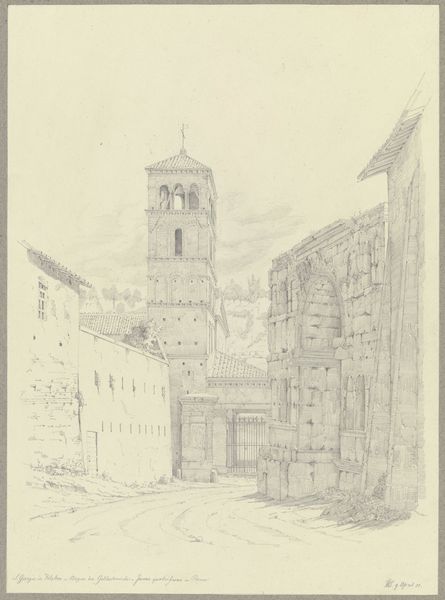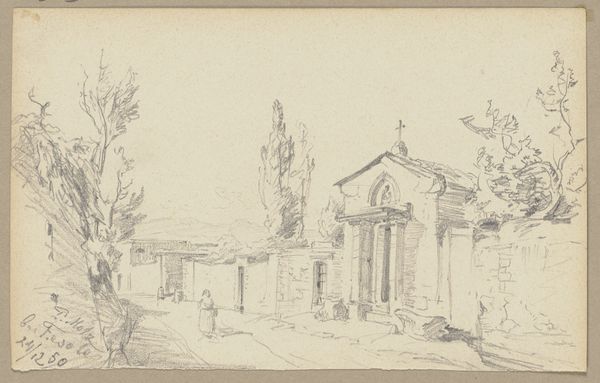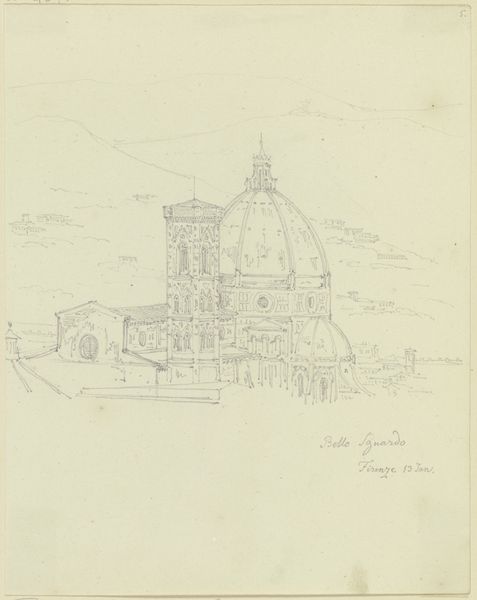
drawing, pencil, architecture
#
drawing
#
16_19th-century
#
landscape
#
etching
#
pencil
#
architecture
Copyright: Public Domain
Curator: This pencil and etching artwork from around 1830 by Friedrich Maximilian Hessemer, depicts the architectural landscape of "Saint Rufino in Assisi," and currently resides in the Städel Museum. Editor: It’s ethereally light, isn't it? Almost as if it’s sketched in the clouds rather than on paper, creating a sense of lightness, despite the heaviness one typically associates with architecture. Curator: Precisely. The softness lends itself to discussions about how landscapes are often presented. Before the advent of photography, such etchings served a critical role in disseminating images of places and cultures, shaping public perception of both, and sometimes these artworks idealized landscapes for cultural and political purposes. Editor: I'm drawn to how much work must have gone into such a detailed pencil drawing, that would then become the guide for an etching—a testament to labor and skill involved in reproducing such views for a wider audience. Did he train others in this process? Curator: He was indeed influential. Hessemer actually spearheaded architectural reforms, aiming to establish consistent construction practices and documentation across his region. "Saint Rufino in Assisi" aligns perfectly with his goals, in a way, of archiving existing architectures via artistic practices. Editor: Fascinating how an artistic skill intersected with nascent standardization practices. You get the feeling this was meant to communicate on several levels, not just as a purely artistic piece. It really makes you consider how he, with his unique materials and perspective, saw and engaged with the architecture, adding a new layer to the experience of Saint Rufino. Curator: Indeed. The cultural value that museums attribute to works like this is something to contemplate, though, regarding these sketches versus other, larger pieces that draw crowds. It seems these detailed but subtle artworks had another impact than monumental, well-known oil paintings. Editor: Absolutely. I’ll definitely remember the detail of craft and his contribution when considering architectural reproduction moving forward. Curator: Agreed, the complex ways art communicates political and social narratives adds greatly to the whole experience.
Comments
No comments
Be the first to comment and join the conversation on the ultimate creative platform.
